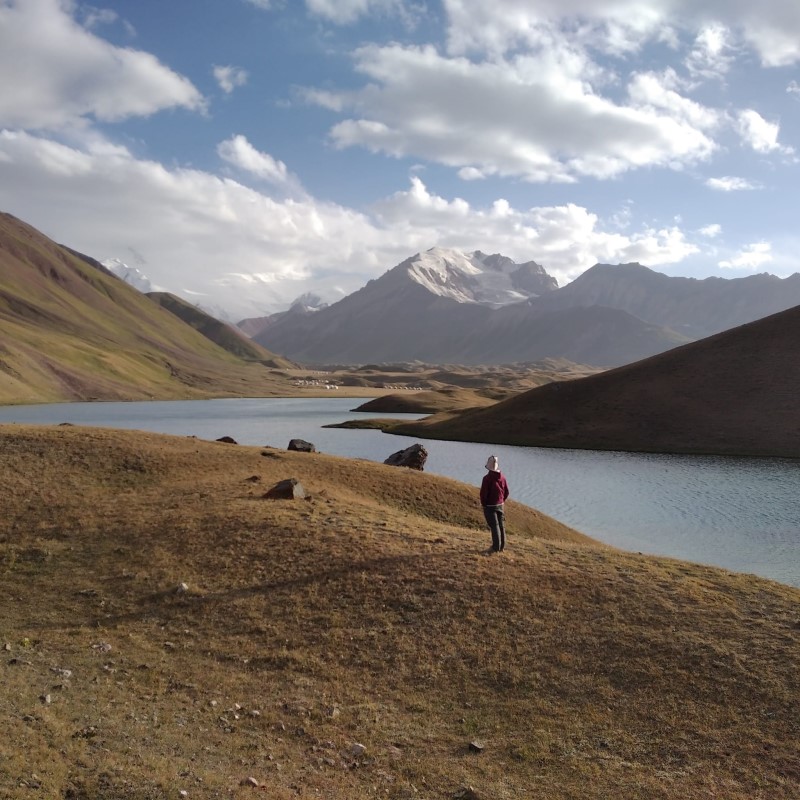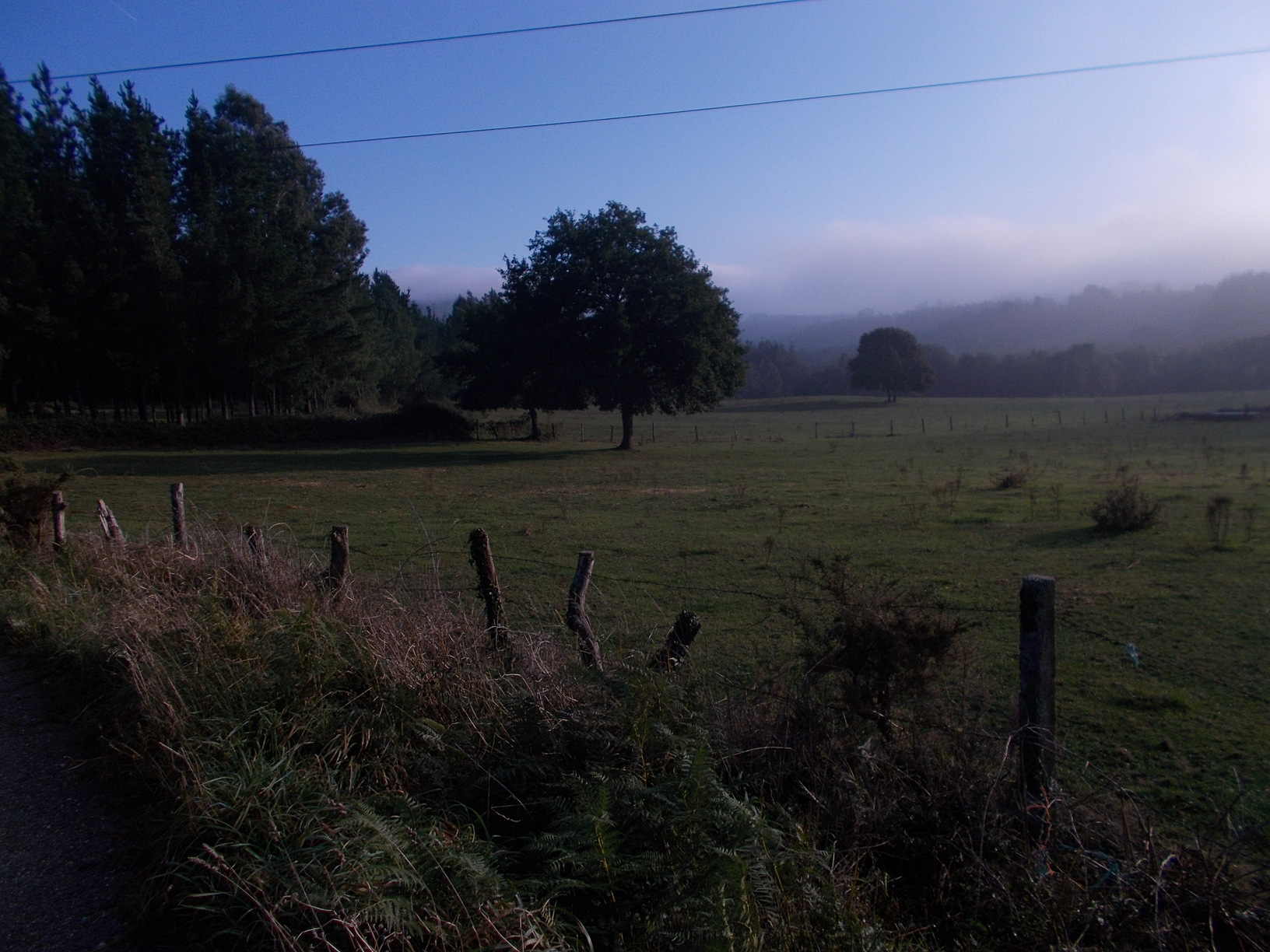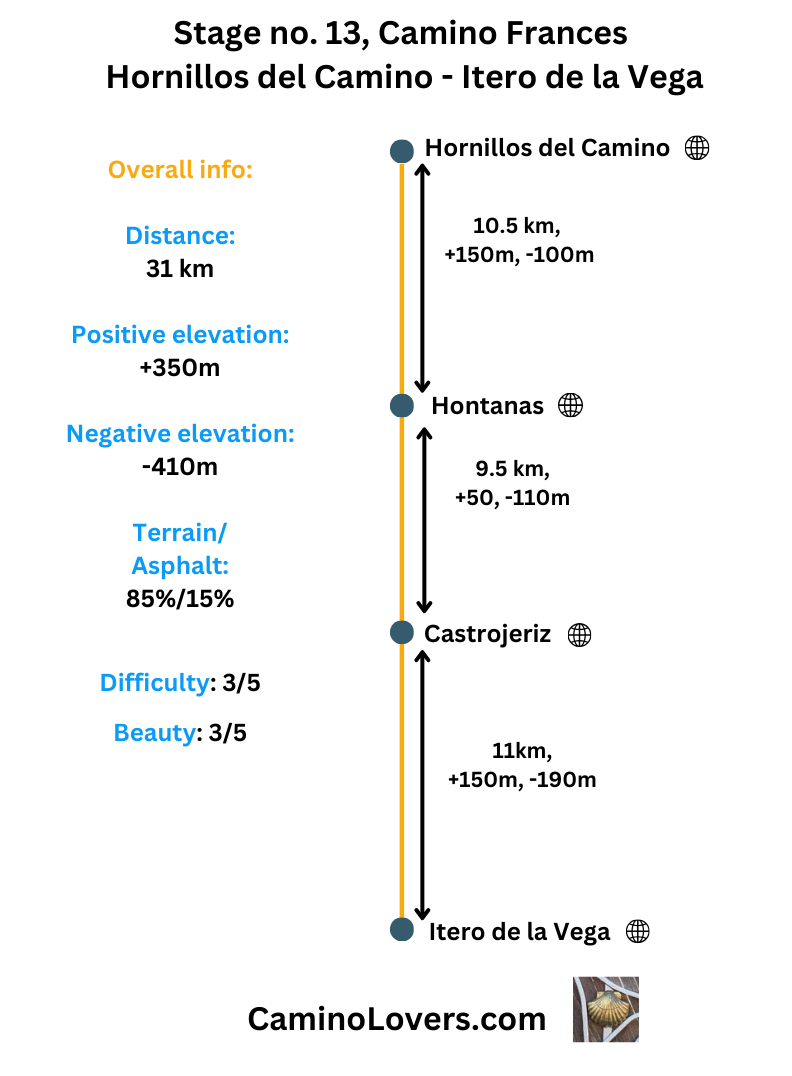
Basic Information
- Starting Point: Hornillos del Camino, Spain – A quintessential Meseta village with traditional stone architecture and pilgrim-focused atmosphere. The life in the village turns around pilgrims, with number of inhabitants typically inferior to the number of pilgrims sleeping in the village. Three pilgrim hostels and other private accommodation options, shop, restaurant, bar.
- Ending Point: Itero de la Vega, Spain – A small agricultural village marking the border between Burgos and Palencia provinces. With roughly 150 inhabitants (the number decreases with each population count) you can count with three pilgrim albergues, small shop, and some places to eat dinner.
- Availability of an alternative route: Just a small alternative towards the end, passing through the village Itero del Castillo, with a few monuments to see, especially the homage tower. You can read more about the place here, to consider whether the detour is worth making or not.
- Distance: Official camino route: 31 km (download GPS here). Alternative route over Itero del Castillo: 32 km (download GPS here).
- Online Map: Official camino route here, alternative route here.
- Elevation Difference: Official camino route: +335 m ascent, -390 m descent. Alternative route: +350 m , – 405m.
- Difficulty Score: 3/5 for both routes.
- Beauty Score: 3/5.
- Terrain/Asphalt Walking Ratio: 85% dirt trails, 15% asphalt/road walking/right next to the road, for both the main and alternative route.
- Next stage: Camino Frances Stage no. 14, Itero de la Vega – Carrion de los Condes.
- Previous stage: Camino Frances, Stage no. 12, Burgos – Hornillos del Camino.
Elevation profiles for the route

– Official camino, as you can see there is one steep climb at km 22 of today’s stage. Other than that it is plain sailing really, with minimal gradient of either ascents or descents.

– Alternative camino route, the elevation profile is almost identical with the official camino. But you can notice that this variant is almost 1.5 km longer.
Advanced Info About the Stage
- Trail Marking: Excellent marking through open terrain. The detour over Itero del Castillo is well sign-posted.
- Natural places worth seeing:
- Mirador de Alto de Mostelares. Stop for a while and take in the vastness of the meseta all around you. A nice viewpoint with a steep climb to reach, right on the camino. Location on Google maps here.
- Pisuerga River Valley: Lush vegetation marks your arrival in Itero de la Vega. River of Pisuerga brings life to this part of Spain and, at least in certain parts of the year, the valley is surprisingly green.
- Historical & Cultural places worth seeing:
- Antique convent of San Anton, right on the camino, exactly here. Ruins of old monastery and ancient pilgrim hospital, well preserved. What many people do not know is that there is actually an albergue in the premises of the convent. It is a special place, donation based, with no electricity and obviously no reservations. They have only 12 beds but since the place isn’t well-known and is not apt for “tourigrinos”, you won’t have a problem getting a bed there.
- Ermita de San Nicolas, another beautiful chapel from 11th century that happens to host a donation-based albergue :). And once again there is no electricity, but a warm welcome and communal dinner and breakfast. Location on Google maps here.
- Roman Bridge of Itero: Just before Itero de la Vega stands this 11th century bridge over the river Pisuerga. Location and reviews on Google maps here.
- Local Cuisine: Try local specialties like sopa de ajo (garlic soup) and lechazo (roast lamb). It is much better than the pilgrim menu they typically serve in local restaurants :). Be brave enough to ask for one of the local dishes, and they will typically make it for you.
- Camping/Bivouac Options: It may surprise you, but there is one official camping place on today’s stage close to Castrojeriz (km 20), called Camping Camino de Santiago. Location and reviews on Google maps here. It is a camping site just like all camping sites were many years ago when I used to camp, without fancy bungalows and bubble houses… Simply a campsite where you can pitch a tent or park a car, with shared showers and toilets, and restaurant/bar on site. Very economical, the place is always clean, and dogs are allowed. I like it :). With wild camping or bivouac the situation is similar to the previous stage–possible everywhere but good nowhere. However, if you put your sleeping bag or even a tent on this rest area for pilgrims, you should be fine without anyone bothering you at night. You can also try your luck near the river Pisuerga that you cross just before Itero de la Vega.
- Dog-Friendly Score: 2/5. Again very hot and open for dogs (no shade), especially during the main camino season. But many interesting albergues around this stage accepting dogs improve the score a little bit. Make sure to take plenty of water for your dog. Even if maps show some rivulet crossings, these rivulets can easily all be dry, except of Pisuerga river at the very end of the stage. That’s why it is important to have water for the dog with you.
- Special Remarks: This is the stage with some of the most interesting accommodation options on the entire camino. Places like San Anton or San Nicolas with no electricity and mobile reception located in beautiful buildings, the ecological albergue Fuente Sidres, or the campsite I just mentioned. While these places may lack some comforts of typical albergues on the camino, they are a one of a kind experience. And if you wonder why there are many foreigners running these strange places on the hot Spanish Meseta, I have an answer for you–the price of houses is really good here :).
My picks for accommodation on today’s stage
I already mentioned some pretty interesting places in “special remarks” above, and definitely recommend staying in one of them for a unique experience. However, let me add a few ‘normal’ albergues now, just to give you even more selection:
- Albergue de Peregrinos San Esteban, Castrojeriz (km 20). One of the best rated albergues on the entire Camino Frances. 35 beds in one big room, doesn’t feel crowded. Clean and well maintained, with good kitchen, and enough showers/bathrooms. Only 9 euro/night, opens 12:30, open all year long. In winter it is better calling them to let them know you’re coming. Location and reviews on Google maps here.
- Albergue Rosalia, Castrojeriz (km 20): Another excellent albergue in Castrojeriz. More on the expensive end for the meseta (15 euro/night, dinner extra 15 euro, breakfast 5 euro), but with a very warm ambience, communal dinner, and single beds–nice after sleeping in bunk beds every night :). Great reputation overall. You can see all the reviews and book it directly on Booking, here.
- Albergue La Mochila, Itero de la Vega (km 31): The most interesting place in Itero de la Vega. A traditional bio-construction building made of adobe, wood, and terracotta, nice hosts, communal dinner with vegetarian and vegan options (something I always like :)), they accept dogs, bike, everything. 20 euro for bed and dinner, 26 beds, they accept reservations, location and reviews on Google maps here.
Pictures from the stage
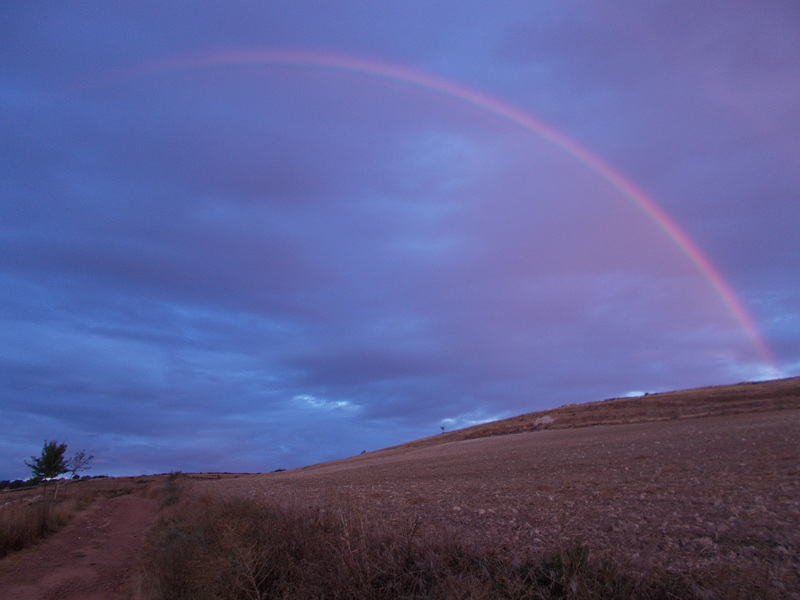 – A few things only can beat early morning rainbow on the meseta…
– A few things only can beat early morning rainbow on the meseta…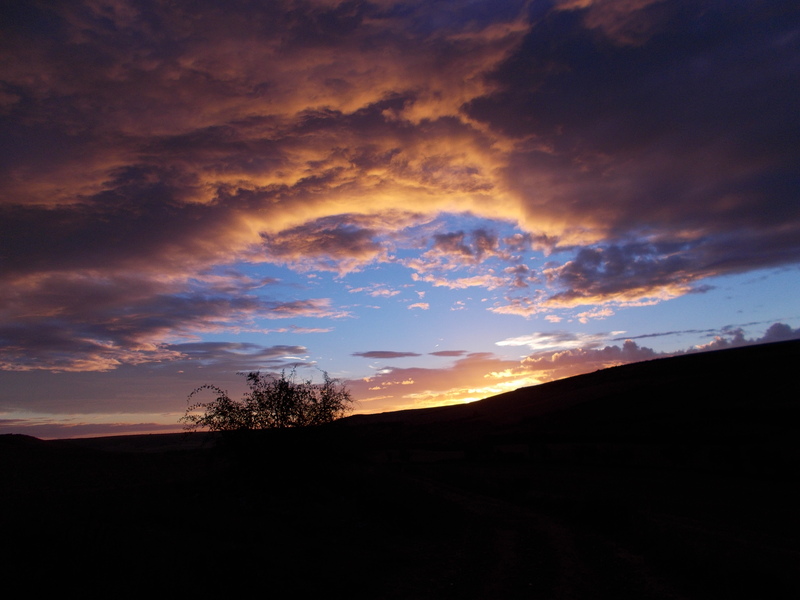 – Perhaps the sunrise coloring the clouds like this can 🙂
– Perhaps the sunrise coloring the clouds like this can 🙂 – Fields, clouds, and endless sky. Welcome to the meseta.
– Fields, clouds, and endless sky. Welcome to the meseta.
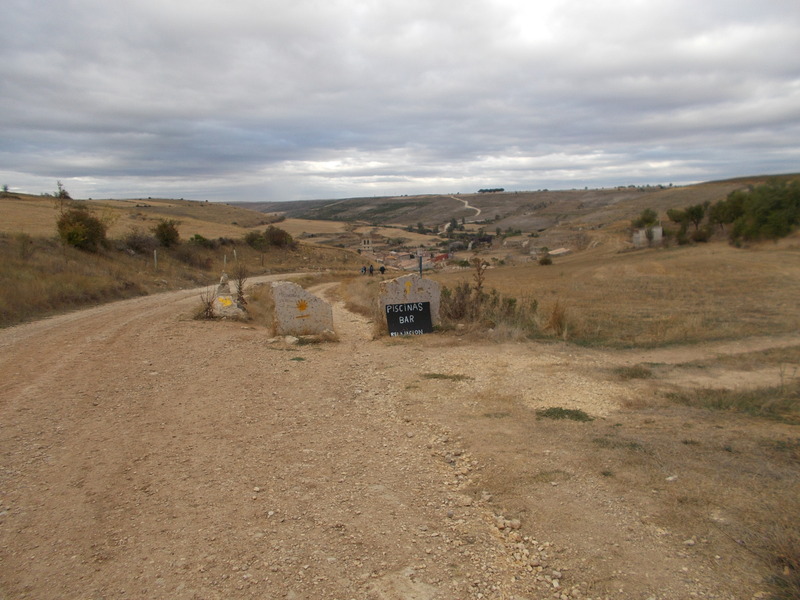 – Entering one of many places on the Meseta that would be a complete ghost town, if camino Frances didn’t pass through it.
– Entering one of many places on the Meseta that would be a complete ghost town, if camino Frances didn’t pass through it.
 – The ancient convent of San Anton, where you will find a surprising donation-based albergue with no electricity and no mobile signal. But they will care for you very well should you stop there.
– The ancient convent of San Anton, where you will find a surprising donation-based albergue with no electricity and no mobile signal. But they will care for you very well should you stop there.
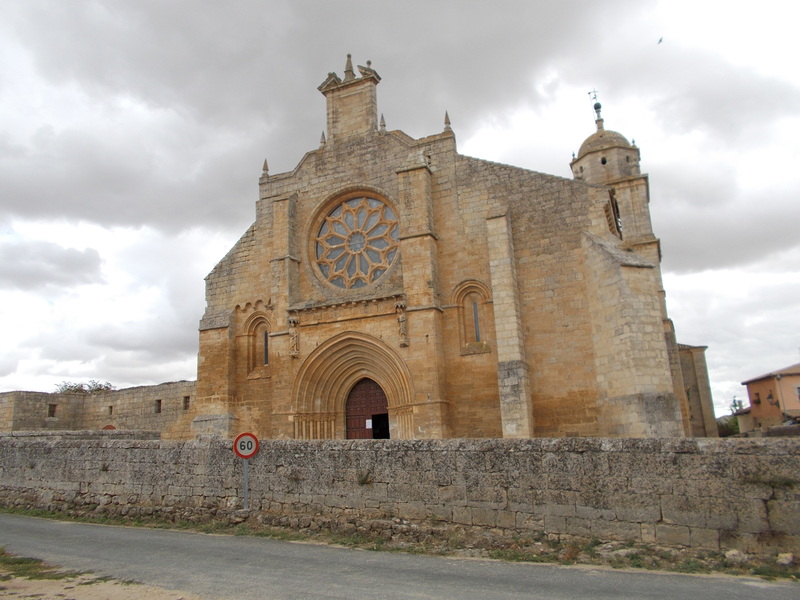 – Another nice church along the way
– Another nice church along the way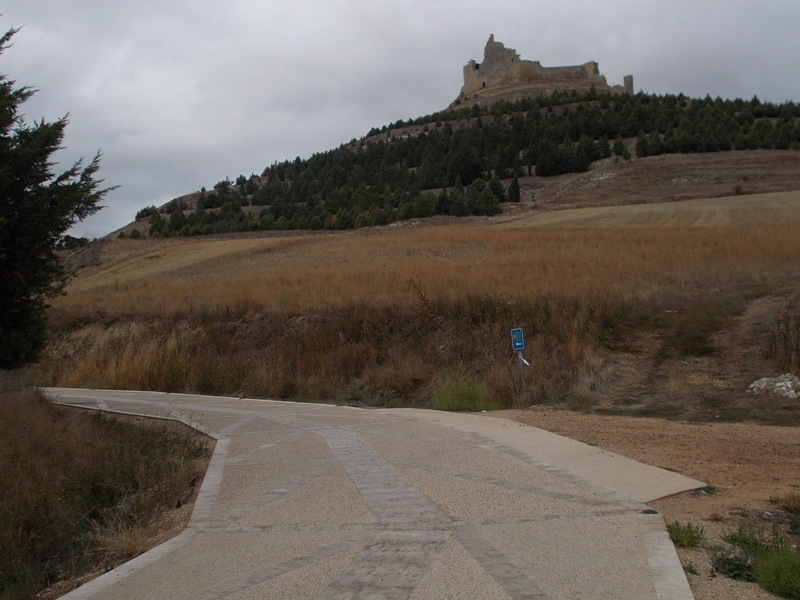 – Castillo de Castrojeriz, great for an afternoon stroll once you’ve already left your backpack in the albergue (if you end your stage here instead of Itero de la Vega)
– Castillo de Castrojeriz, great for an afternoon stroll once you’ve already left your backpack in the albergue (if you end your stage here instead of Itero de la Vega)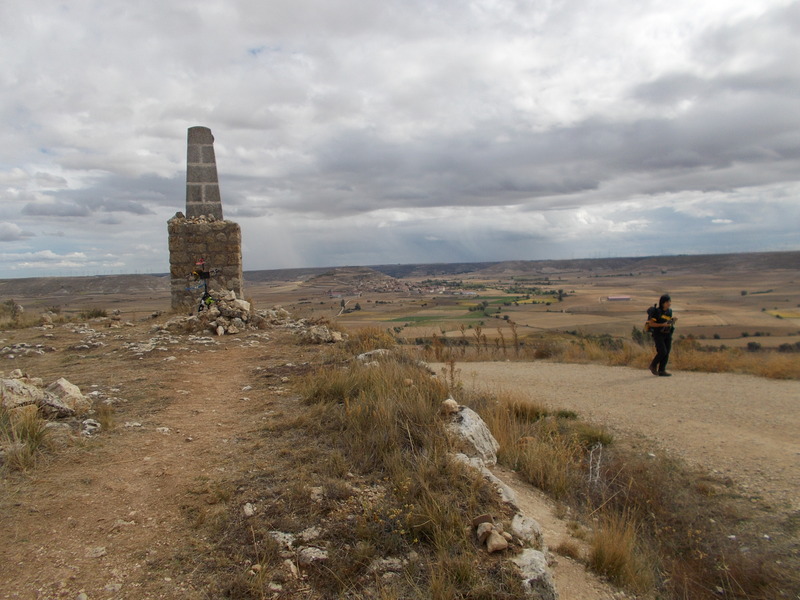 – Mirador del Alto Mostelares, one of the nicest viewpoints on the Meseta. In good weather you can see over 100 kilometers far away…
– Mirador del Alto Mostelares, one of the nicest viewpoints on the Meseta. In good weather you can see over 100 kilometers far away…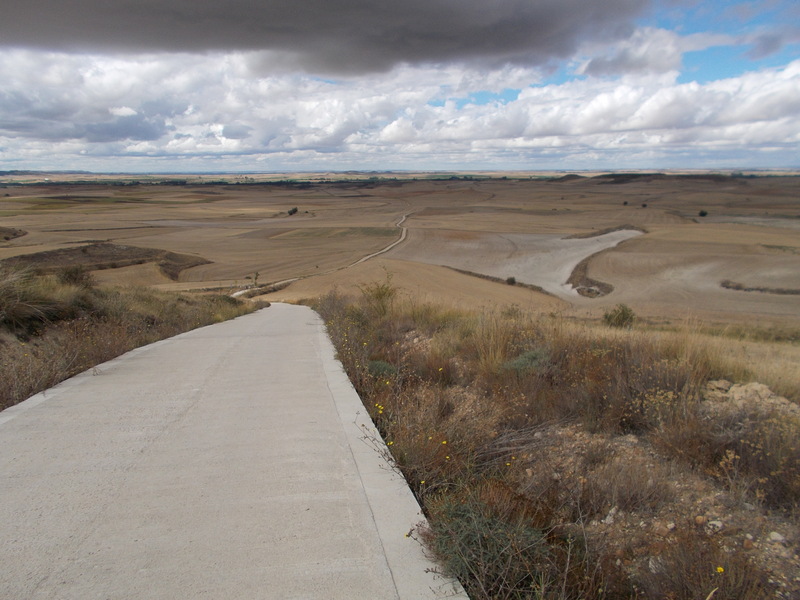 – Looking in the other direction from the viewpoint
– Looking in the other direction from the viewpoint
Few tips at the end
- Try to see the sunrise at Meseta at least once. Experience the Meseta at its most magical in the early morning light. This stage has amazing open landscapes, and sunrises that are hard to forget.
- Evening atmosphere in the ghost villages is ideal for making friendships. Small village albergues create intimate pilgrim camaraderie – perfect for sharing stories and building relationships. In many of these places you won’t find mobile signal or internet, and in some places all pilgrims will eat in the albergue–simply because there aren’t any other options. The peace of the places and the kind of atmosphere they have creates an ideal environment for pilgrims to get to know each other better, and who knows what may come next :).



![Ultralight Packing List for Camino de Santiago [2025 Edition]](https://caminolovers.com/wp-content/uploads/2022/03/altra-shoes-640-x-480.jpg)

